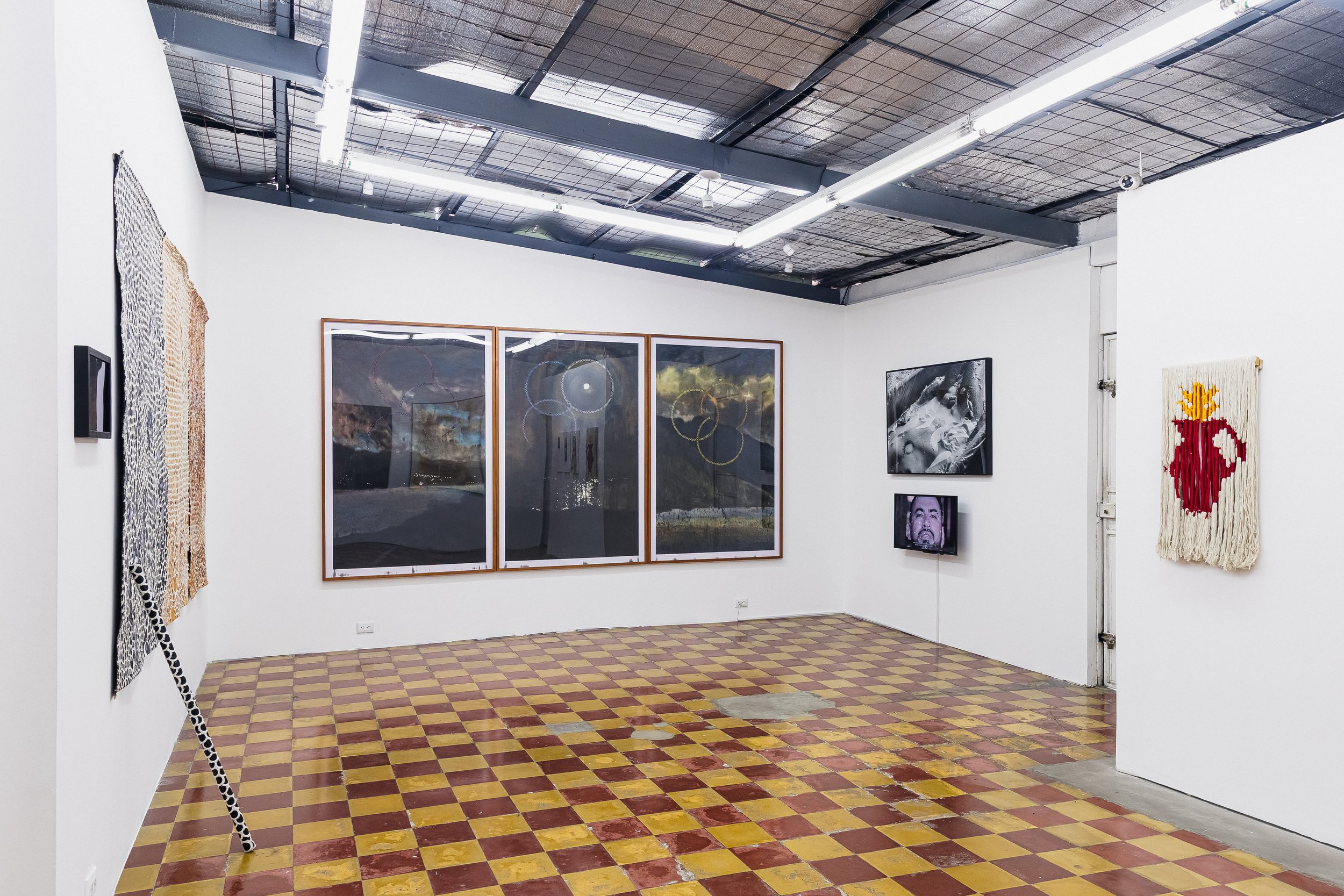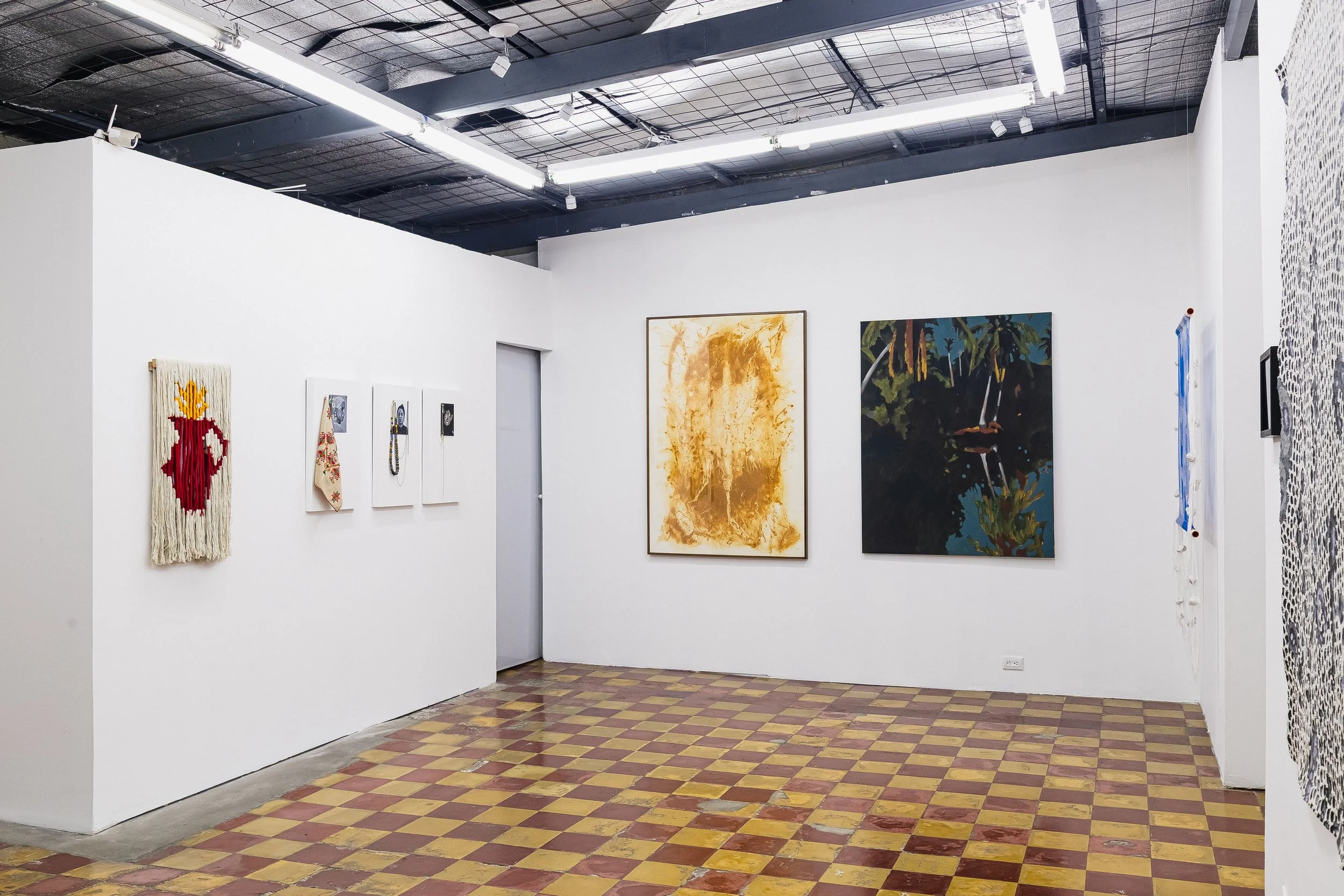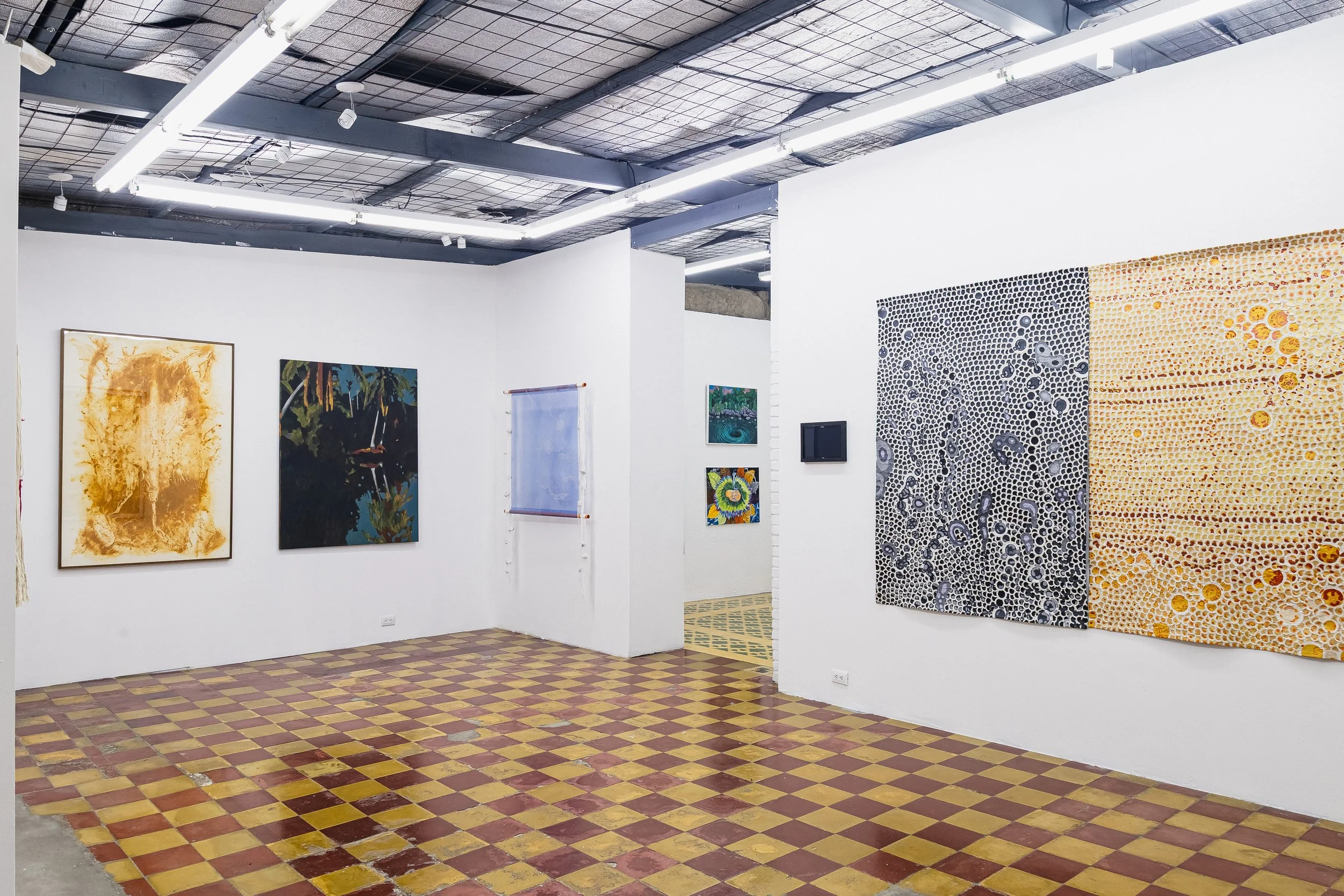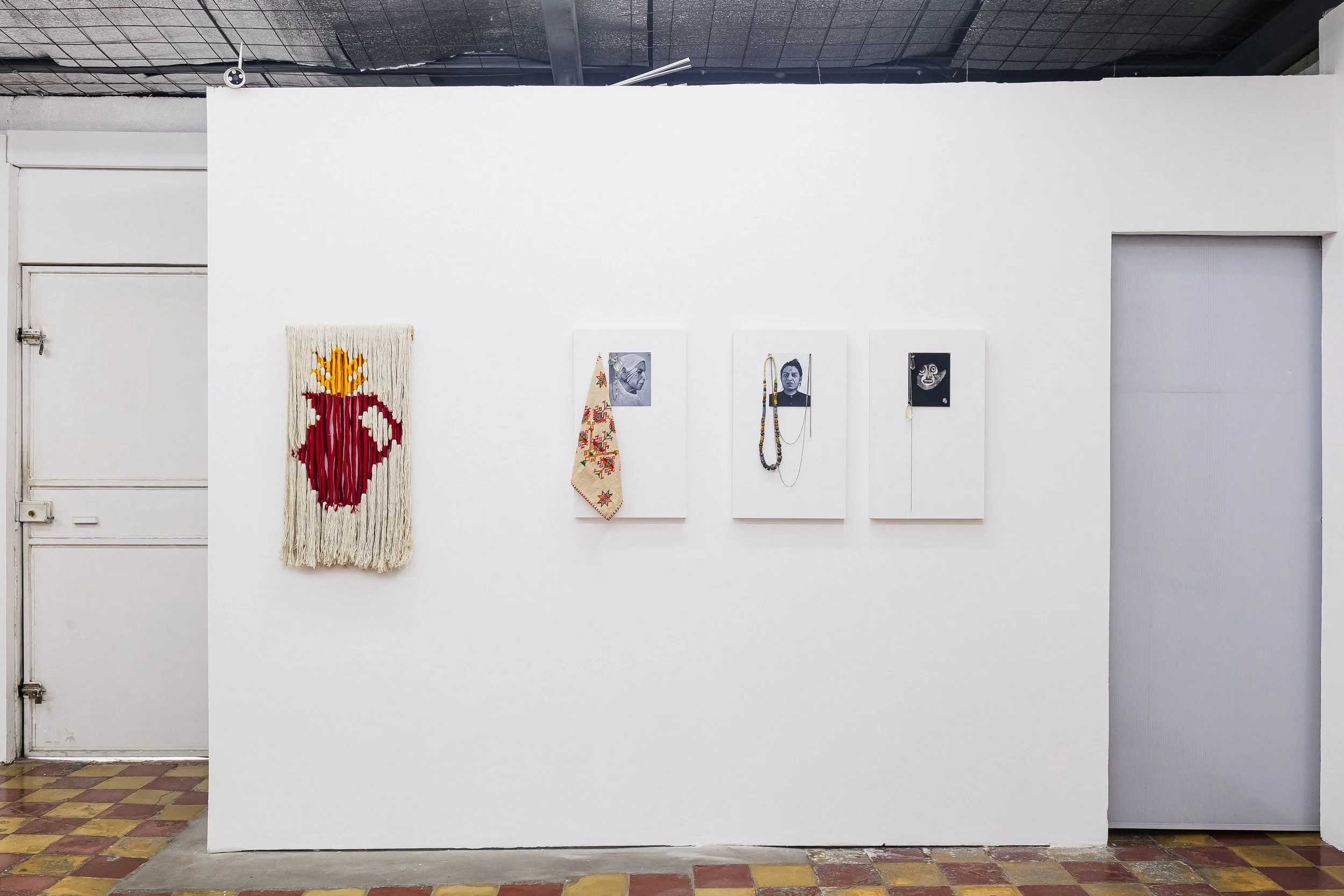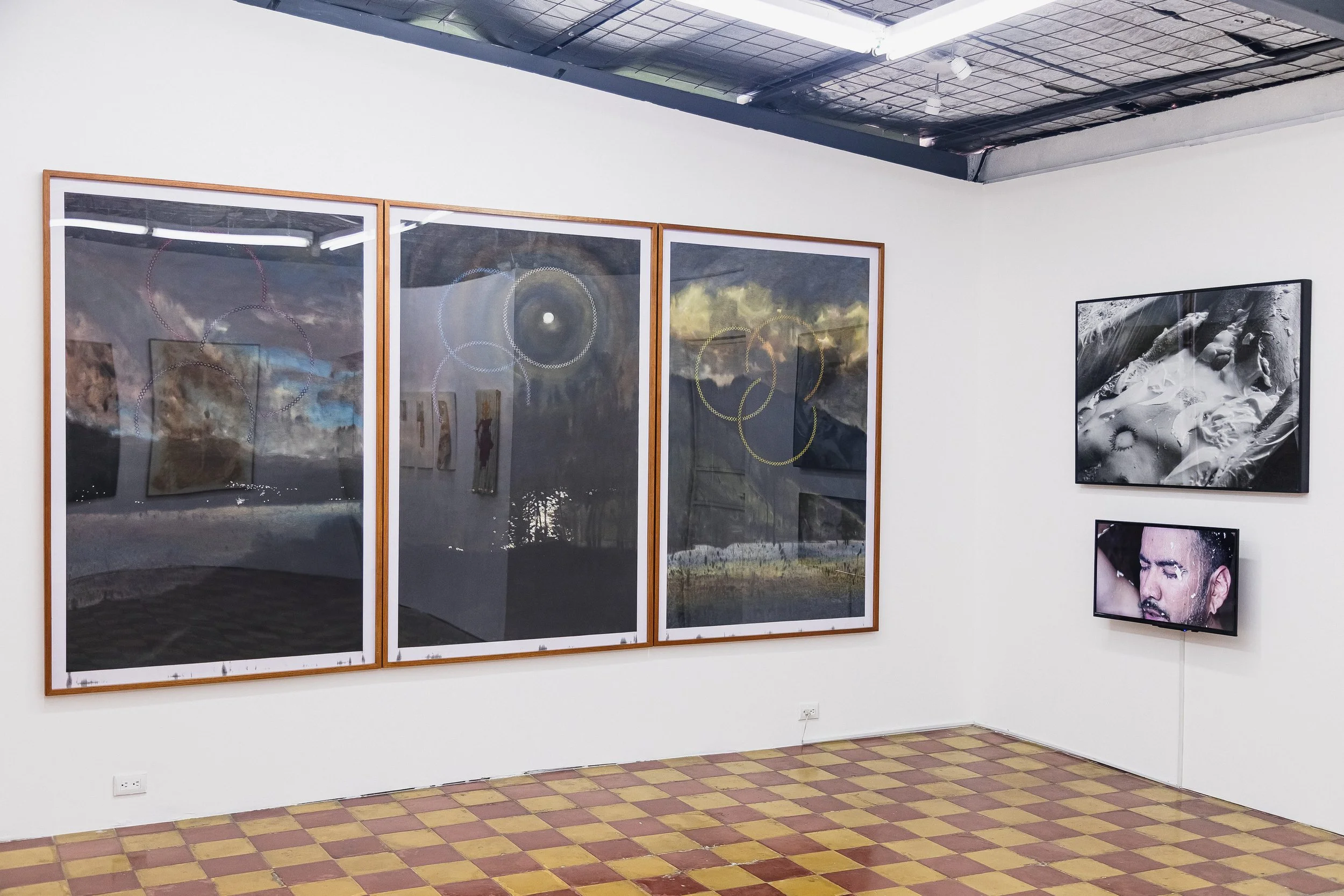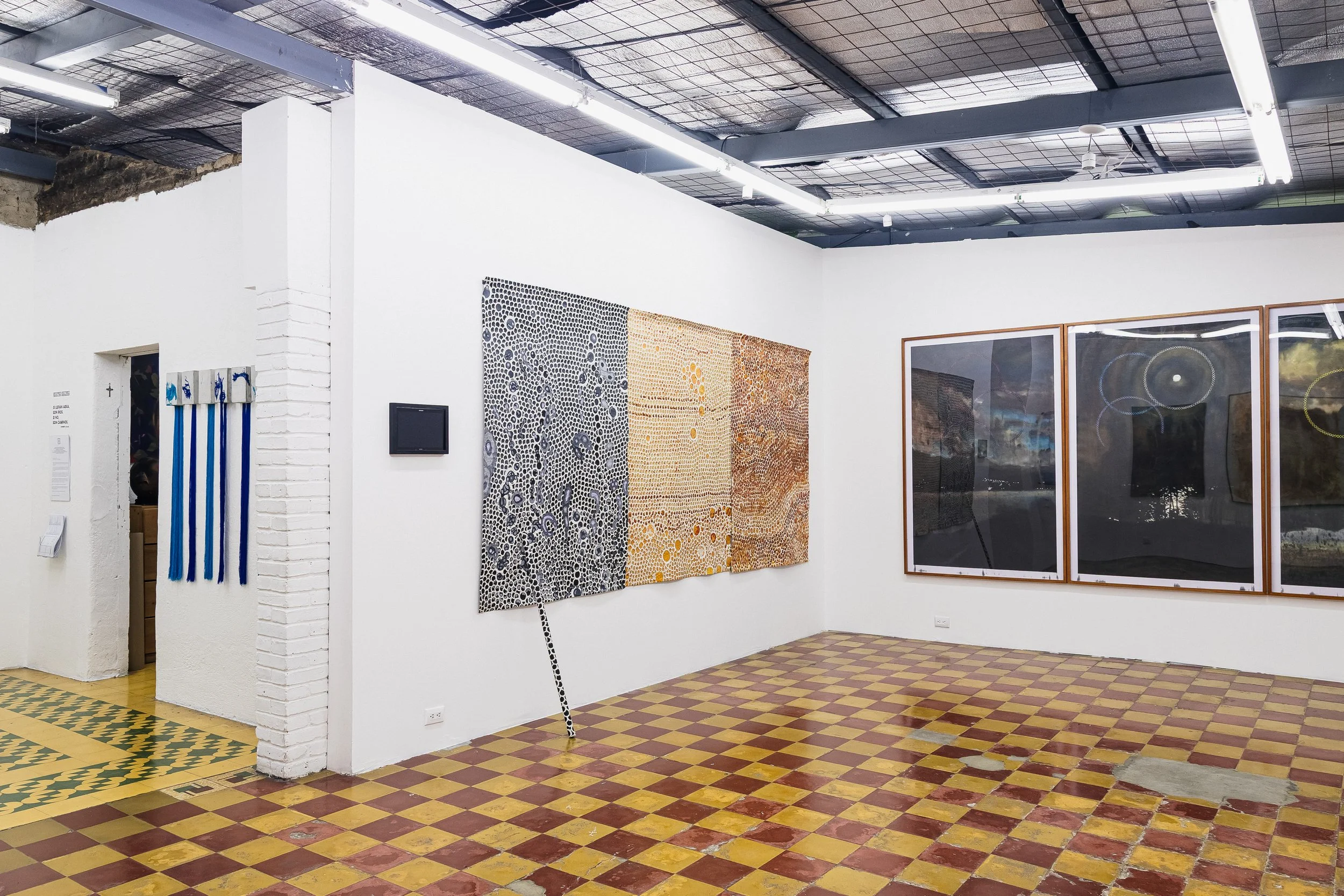ESPAÑOL | ENGLISH
GROUP SHOW / NOVEMBER 6th 2025 - FEBRUARY 13th 2026
SI LLEVAN AGUA, SON RÍOS. SI NO, SON CAMINOS.
IF THEY CARRY WATER, THEY’RE RIVERS. IF NOT, THEY’RE ROADS.
This exhibition takes its starting point from Humberto Ak’abal’s poem, which invites us to look closely at what still flows and what has come to a halt. What carries life, and what has been broken or displaced?
Like rivers, bodies and territories hold memory. At times they flow and allow us to navigate; at others they stir, retreat, or grow restless. Rivers too have temperaments; they breathe, react, and feel. A form of consciousness lives within them.
To think of the river is to think of movement, trace, and memory. It is to recognize what continues its course and what was interrupted, what has hardened and what still shifts beneath the surface. A river carries life; a path may be only the remnant of what once flowed. Yet even what is dry can become wet again.
The works in this exhibition trace a sensitive cartography of the region, where body and territory, loss and resistance, are intertwined. Through diverse materials and approaches, the participating artists evoke memory as current, landscape as wound, and history as a channel in transformation.
Each work is a flow, a way of thinking, resisting, and remembering. In a world where so many rivers have been turned into paths, this exhibition reminds us that water, like art and memory, always finds a way to keepflowing.
How much water, how much history, remains in the paths we walk?
THE ARTISTS
MANUEL CHAVAJAY
ADAN VALLECILLO
GABRIEL RODRÍGUEZ PELLECER
FREDY RANGEL
MOISÉS BARRIOS
NOÉ MARTINEZ
MARÍA SOSA
ANDREA MONROY PALACIOS
MARILYN BOROR
ESTER MIZA
ANTONIO PICHILLA
KARMADAVIS
ELYLA
EXHIBITION VIEW



